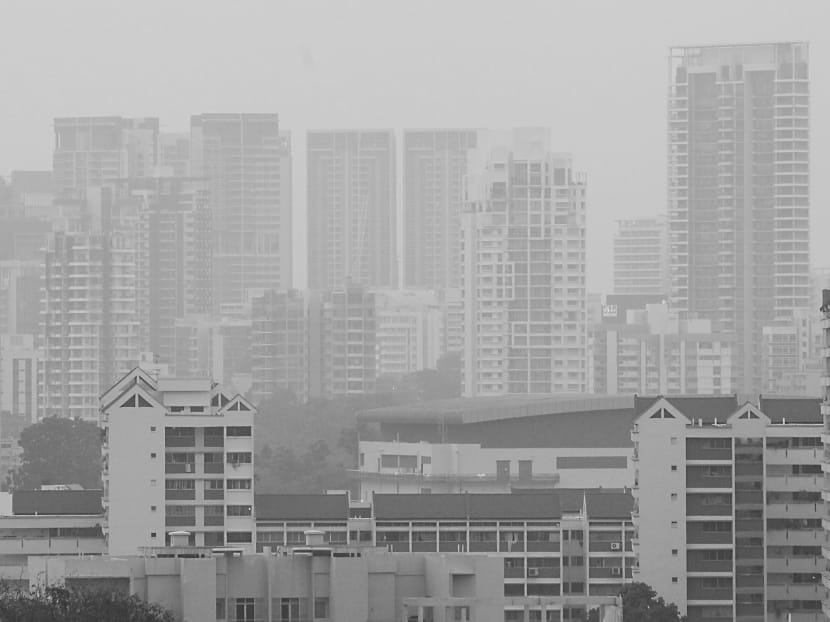Sharing solutions city-to-city
Urbanisation is occurring at an accelerating pace. The United Nations Population Fund (UNFPA) said five billion people will live in cities by 2030. This means about six out of 10 of the world’s population will live in cities. But urbanisation also comes with challenges such as overcrowding, rising social and income inequalities as well as pollution, and overstretched public infrastructure.

Parliamentary opposition has delayed Indonesia’s plan to ratify the ASEAN Agreement on Transboundary Haze Pollution for more than a decade, which means transboundary haze continues to affect Singapore. TODAY FILE PHOTO
Urbanisation is occurring at an accelerating pace. The United Nations Population Fund (UNFPA) said five billion people will live in cities by 2030. This means about six out of 10 of the world’s population will live in cities. But urbanisation also comes with challenges such as overcrowding, rising social and income inequalities as well as pollution, and overstretched public infrastructure.
This proliferation of common urban challenges necessitates greater policy learning and cooperation among cities to facilitate the cross-pollination and sharing of solutions and best practices. This need for cooperation will feature heavily in next week’s World Cities Summit 2014, which is organised around the unifying theme of “Liveable and Sustainable — Common Challenges, Shared Solutions”.
HOW CITIES COOPERATE
Given that many of the world’s cities face similar challenges, there is a strong impetus for mutual learning and collaborative problem-solving among mayors. Yet, it is also important to note that city-to-city cooperation (C2C) as a concept is not new.
As early as 1994, Singapore and China established the China-Singapore Suzhou Industrial Park to foster innovation and entrepreneurship. This was followed by more Sino-Singapore cooperation at the city level, such as the Sino-Singapore Tianjin Eco-city. More recently, Singapore and Guangdong have signed 18 memorandums of understanding (MOU) to encourage trade and economic collaboration. These MOUs are also expected to contribute to the development of the Sino-Singapore Guangzhou Knowledge City.
C2C also takes place at the multilateral level. For instance, the C40 Cities Climate Leadership Group provides a forum through which city mayors can collaborate and share knowledge on potential solutions to climate change issues. Other networks of cities and local governments that are working towards shared urban solutions are the International Council for Local Environmental Initiatives and the United Cities and Local Governments.
The work of such city and local government networks has culminated in real tangible policy impacts. In its recently published report titled Climate Action in Megacities, the C40 notes that there has been a marked increase in action taken to reduce greenhouse gas emissions and share climate change best practices among its members over the past three years.
The World Cities Summit similarly presents a useful forum through which participants can “stimulate ideas and discussion towards the objective of finding practical, implementable solutions”, in the process providing an invaluable opportunity for mayors to evaluate past policies and brainstorm for new policy ideas.
Singapore has actively participated in both bilateral and multilateral C2Cs. As a small city-state that constantly faces economic, geopolitical and urban challenges, Singapore has much to gain from such cooperation. As existing instances of Sino-Singapore city-level cooperation have shown, C2C allows the Republic access to the markets of burgeoning economies such as China, and continues to provide it with an ‘external wing’ to its economy.
Furthermore, C2C exchanges allow for the fostering of diplomatic relations at the city-level. This allows for the bottom-up establishment of a web of city-to-city relations that may persist even during disagreements between countries at the national level. As a small and increasingly dense city, Singapore also stands to gain by learning from the best practices and policy initiatives of other cities. More importantly, Singapore has an important role to play in sharing its own success with other cities, particularly in areas such as water management.
However, there are limits to such lessons, given Singapore’s unique position as a city-state and its consequent conflation of national and local level policymaking. This simplifies urban governance considerably, in contrast to other cities, where mayors straddle different levels of government.
DO MAYORS RULE THE WORLD?
In an increasingly urbanised world, the need for shared solutions to common urban problems mean that the role of mayors in urban governance has gained prominence. One of the World Cities Summit’s thematic tracks is Will Mayors Rule the World. The answer to that question, said political scientist Benjamin R Barber in his 2013 book If Mayors Ruled the World, is a resounding yes.
This is a view predicated upon the fact that state-to-state cooperation at the national level has of late proven far from effective. For example, parliamentary opposition has delayed Indonesia’s plan to ratify the ASEAN Agreement on Transboundary Haze Pollution for more than a decade. In contrast, C2C networks have proven more effective in stimulating policy action — the C40 Climate Action in Megacities report released this year showed that climate change action by C40 member cities have doubled over the past two years to 8,000.
However, mayors remain largely subordinate to national leaders. Although mayors play an important role in implementing policies at the local level, national leaders continue to set broad policy agenda and, more importantly, determine the financing of local level policies.
In other words, mayors do not rule the world. However, the effective and efficient provision of public services to urban dwellers reveals the integral the role they play in “running” the world.
ABOUT THE AUTHORS:
Dr Woo Jun Jie is postdoctoral fellow and Debbie Loo is a researcher at the Lee Kuan Yew Centre for Innovative Cities, Singapore University of Technology and Design.






